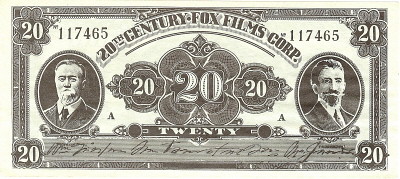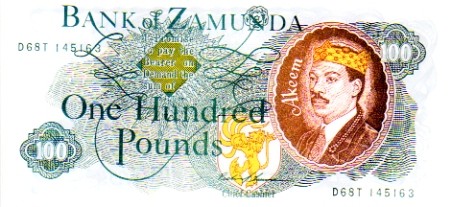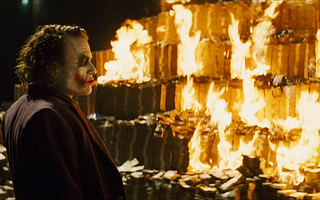
PREV ARTICLE
NEXT ARTICLE
FULL ISSUE
PREV FULL ISSUE
HOW HOLLYWOOD MAKES ITS MILLIONS (IN PROP MONEY)A lengthy article in The Telegraph this week examines the fake currency Hollywood uses in its films. -Editor
But what most people don’t think about when watching the on-screen clips of huge amounts of money, is that it’s actually pretty rare to see real banknotes on screen – and the world of fake movie cash is governed by strict laws. Tim Lawes is manager at the movie collectibles company Propstore, which handles some of the fake banknotes used in films – including the bundles of notes used in The Dark Knight. Lawes explains that, while it is not illegal to film real money – although it is illegal to make like the Joker and destroy it – "realistic cash tends to be produced for filming for any number of practical reasons". In the early days of Hollywood, counterfeiting laws prevented the use of real banknotes in film. But in 1920, when the Mexican revolution came to an end, large quantities of colourful – but worthless – Mexican currency hit the market, and were acquired by film studios looking for a realistic-ish substitute for US money. According to the website Paper Money of Sonora, the most common were the $5, $10 and $20 notes from the brilliantly named Banco del Estado de Chihuahua. When the real Mexican notes began to run out, studios began to produce their own mock-ups, based on the original designs (some of which featured the studio's name).  Later on, in the Seventies, filmmakers began to demand more realistic-looking money. But, when it comes to the manufacture of prop money, strict legal guidelines must be followed. US laws, for example, demand that fake cash be one-sided, and less than 75 per cent or more than 150 per cent the size of a real bill. In the UK, the Bank of England's guidelines also require prop notes to be one-sided and significantly larger or smaller than real notes. (They also demand that there should be "no distortion to the Queen's image".) When it comes to movie prop collectors– rather than hopeful extras angling after some free money – lack of realism in a banknote can actually increase its appeal. Many banknotes are custom made for their respective films, often because the movie's plot requires a specific type of note. “Perhaps the story features a new king or president. Money will then be designed accordingly,” says Lawes. As an example, he points out that in Back to the Future II, banknotes featuring an arrogant-looking Biff Tannen (Thomas F. Wilson) were produced for the alternative version of 1985.  To read the complete article, see:
Wayne Homren, Editor The Numismatic Bibliomania Society is a non-profit organization promoting numismatic literature. See our web site at coinbooks.org. To submit items for publication in The E-Sylum, write to the Editor at this address: whomren@gmail.com To subscribe go to: https://my.binhost.com/lists/listinfo/esylum All Rights Reserved. NBS Home Page Contact the NBS webmaster 
|
